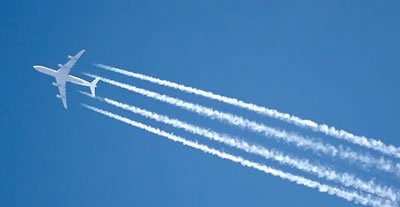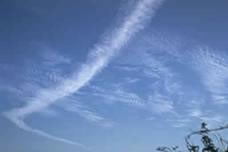Useful links
Download our Metlink Bookmark, cloud wheel or cloud chart as a cloud identification chart.
Does rain always come from dark clouds? Use our colour chart to find out. Or, use a home made cyanometer to see how blue the sky is, and link it to art or to discussions about why the sky is blue, and how pollution affects it.
Which way are the clouds moving? You can use the OPAL guide to making a nephoscope for this.
Cloudiness – you could either record as ‘Clear sky, mostly clear, mostly cloudy or overcast’, or record in oktas, using a cloud mirror (using a ruler, draw a grid of lines onto a square mirror so that you have 16 equal size boxes; look at the sky with the mirror. How many boxes are mostly cloudy? Divide by 2 to give oktas and repeat for different bits of the sky to get an average).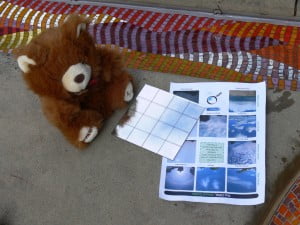
Experiments demonstrate clouds forming in the Classroom from Physics Education, 2012, Catalyst article on Cloud Seeding, Physics Review article on Clouds, or have a look at our Experiments and Demonstrations page for experiments which demonstrate how clouds can look dark from below but white from above, or how to make a hygrometer to measure air humidity.
For a deeper understanding of how and where clouds form, have a look at our exercise using height/ temperature graphs to investigate atmospheric stability, lapse rates and cloud formation with a worksheet for students with an introductory PowerPoint or this paper.
What causes clouds
Types of clouds
Low clouds
Medium clouds
High clouds
What influences the colour of clouds?
Why do clouds stop growing upwards?
Why are there no clouds on some days?
Measuring clouds
The formation of precipitation
The nature of clouds
Types of cloud
Cumulus
Cumulonimbus
Stratus
Stratocumulus
Altocumulus
Altostratus
Nimbostratus
Cirriform clouds
Short-answer questions
What causes clouds
A cloud is defined as ‘a visible aggregate of minute droplets of water or particles of ice or a mixture of both floating in the free air’. Each droplet has a diameter of about a hundredth of a millimetre and each cubic metre of air will contain 100 million droplets. Because the droplets are so small, they can remain in liquid form in temperatures of -30 °C. If so, they are called supercooled droplets.
Clouds at higher and extremely cold levels in the atmosphere are composed of ice crystals – these can be about a tenth of a millimetre long.
Clouds form when the invisible water vapour in the air condenses into visible water droplets or ice crystals. For this to happen, the parcel of air must be saturated, i.e. unable to hold all the water it contains in vapour form, so it starts to condense into a liquid or solid form. There are two ways by which saturation is reached.
(a) By increasing the water content in the air, e.g. through evaporation, to a point where the air can hold no more.
(b) By cooling the air so that it reaches its dew point – this is the temperature at which condensation occurs, and is unable to ‘hold’ any more water. Figure 1 shows how there is a maximum amount of water vapour the air, at a given temperature, can hold. In general, the warmer the air, the more water vapour it can hold. Therefore, reducing its temperature decreases its ability to hold water vapour so that condensation occurs.
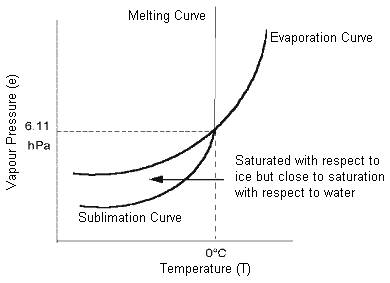
Method (b) is the usual way that clouds are produced, and it is associated with air rising in the lower part of the atmosphere. As the air rises it expands due to lower atmospheric pressure, and the energy used in expansion causes the air to cool. Generally speaking, for each 100 metres which the air rises, it will cool by 1 °C, as shown in Figure 2. The rate of cooling will vary depending on the water content, or humidity, of the air. Moist parcels of air may cool more slowly, at a rate of 0.5 °C per 100 metres.
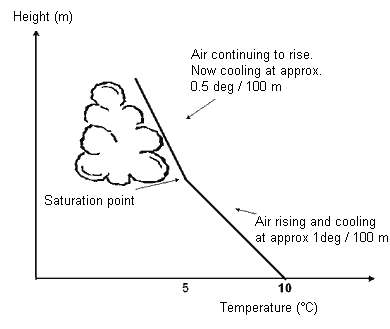
Therefore, the vertical ascent of air will reduce its ability to hold water vapour, so that condensation occurs. The height at which dew point is reached and clouds form is called the condensation level.
There are five factors which can lead to air rising and cooling.
1. Surface heating. The ground is heated by the sun which heats the air in contact with it causing it to rise. The rising columns are often called thermals.
2. Topography. Air forced to rise over a barrier of mountains or hills. This is known as orographic uplift.
3. Frontal. A mass of warm air rising up over a mass of cold, dense air. The boundary is called a ‘front’.
4. Convergence. Streams of air flowing from different directions are forced to rise where they meet.
5. Turbulence. A sudden change in wind speed with height creating turbulent eddies in the air.
Another important factor to consider is that water vapour needs something to condense onto. Floating in the air are millions of minute salt, dust and smoke particles known as condensation nuclei which enable condensation to take place when the air is just saturated.
Types of clouds
In 1803 a retail chemist and amateur meteorologist called Luke Howard proposed a system which has subsequently become the basis of the present international classification. Howard also become known by some people as ‘the father of British meteorology’, and his pioneering work stemmed from his curiosity into the vivid sunsets in the late 18th century following a series of violent volcanic eruptions. They had ejected dust high up into the atmosphere, thereby increasing the amount of condensation nuclei, and producing spectacular cloud formations and sunsets.
Howard recognised four types of cloud and gave them the following Latin names.
Cumulus heaped or in a pile
Stratus in a sheet or layer
Cirrus thread-like, hairy or curled
Nimbus a rain bearer
If we include another Latin word altum meaning height, the names of the 10 main cloud types are all derived from these five words and based upon their appearance from ground level and visual characteristics.
The cloud types are split into three groups according to the height of their base above mean sea level. Note that ‘medium’ level clouds are prefixed by the word alto and ‘high’ clouds by the word cirro (see Table 1). All heights given are approximate above sea level in mid-latitudes. If observing from a hill top or mountain site, the range of bases will accordingly be lower.
|
Low clouds
Cumulus (Cu)
Height of base: 1,200-6,000 ft
Colour: White on its sunlit parts but with darker undersides.
Shape: This cloud appears in the form of detached heaps. Shallow cumulus may appear quite ragged, especially in strong winds, but well formed clouds have flattened bases and sharp outlines. Large cumulus clouds have a distinctive ‘cauliflower’ shape.
Other features: Well developed cumulus may produce showers.

photo © R.K.Pilsbury
Cumulonimbus (Cb)
Height of base: 1,000-5,000 ft
Colour: White upper parts with dark, threatening undersides.
Shape: A cumulus-type cloud of considerable vertical extent. When the top of a cumulus reaches great heights, the water droplets are transformed into ice crystals and it loses its clear, sharp outline. At this stage the cloud has become a cumulonimbus. Often, the fibrous cloud top spreads out into a distinctive wedge or anvil shape.
Other features: Accompanied by heavy showers, perhaps with hail and thunder. By convention Cb is usually reported if hail or thunder occur, even if the observer does not immediately recognise the cloud as Cb (it may be embedded within layers of other cloud types).
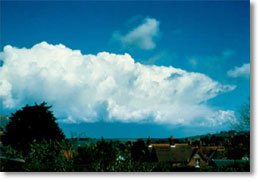
photo © R.K.Pilsbury
Stratus (St)
Height of base: surface-1,500 ft
Colour: Usually grey.
Shape: May appear as a layer with a fairly uniform base or in ragged patches, especially during precipitation falling from a cloud layer above. Fog will often lift into a layer of stratus due to an increase in wind or rise in temperature. As the sun heats the ground the base of stratus cloud may rise and break becoming shallow cumulus cloud as its edges take on a more distinctive form.
Other features: If thin, the disc of the sun or moon will be visible (providing there are no other cloud layers above). If thick, it may produce drizzle or snow grains.
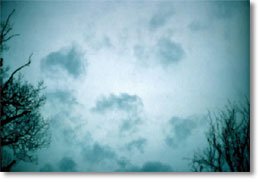
photo © C.S.Broomfield
Stratocumulus (Sc)
Height of base: 1,200-7,000 ft
Colour: Grey or white, generally with shading.
Shape: Either patches or a sheet of rounded elements but may also appear as an undulating layer. When viewed from the ground, the size of individual elements will have an apparent width of more than 5° when at an elevation greater than 30° (the width of three fingers at arm’s length).
Other features: May produce light rain or snow. Sometimes the cloud may result from the spreading out of cumulus, giving a light shower.

photo © J.F.P Galvin
Medium clouds
Altocumulus (Ac)
Height of base: 7,000-17,000 ft
Colour: Grey or white, generally with some shading.
Shape: Several different types, the most common being either patches or a sheet of rounded elements but may also appear as a layer without much form. When viewed from the ground, the size of individual elements will have an apparent width of 1 to 5° when at an elevation greater than 30° (the width of one to three fingers at arm’s length). Even if the elements appear smaller than this the cloud is still classified altocumulus if it shows shading.
Other features: Occasionally some slight rain or snow, perhaps in the form of a shower may reach the ground. On rare occasions, a thunderstorm may occur from one type of Ac known as altocumulus castellanus – so called because in outline, the cloud tops look like a series of turrets and towers along a castle wall.
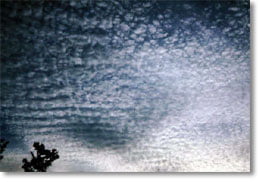
photo © C.S.Broomfield
Altostratus (As)
Height of base: 8,000-17,000 ft
Colour: Greyish or bluish.
Shape: A sheet of uniform appearance totally or partly covering the sky.
Other features: Sometimes thin enough to reveal the sun or moon vaguely, as through ground glass. Objects on the ground do not cast shadows. May give generally light rain or snow, occasionally ice pellets, if the cloud base is no higher than about 10,000 ft.
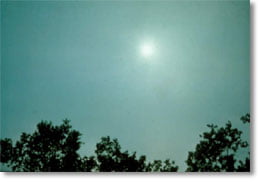
photo © C.S.Broomfield
Nimbostratus (Ns)
Height of base: 1,500-10,000 ft
Colour: Dark grey.
Shape: A thick, diffuse layer covering all or most of the sky.
Other features: Sun or moon always blotted out. Accompanied by moderate or heavy rain or snow, occasionally ice pellets. Although classed as a medium cloud, its base frequently descends to low cloud levels. May be partly or even totally obscured by stratus forming underneath in precipitation.

photo © C.S.Broomfield
High clouds
Cirrus (Ci)
Height of base: 17,000-35,000 ft
Colour: Composed of ice crystals, therefore white.
Shape: Delicate hair-like filaments, sometimes hooked at the end; or in denser, entangled patches; or occasionally in parallel bands which appear to converge towards the horizon.
Other features: The remains of the upper portion of a cumulonimbus is also classified as cirrus.

photo © R.K.Pilsbury
Cirrocumulus (Cc)
Height of base: 17,000-35,000 ft
Colour: Composed of ice crystals, therefore white.
Shape: Patches or sheet of very small elements in the form of grains or ripples or a honeycomb. When viewed from the ground, the size of individual elements will have an apparent width of less than 1° when at an elevation greater than 30° (no greater than the width of a little finger at arm’s length).
Other features: Sometimes its appearance in a regular pattern of ‘waves’ and small gaps may resemble the scales of a fish, thus giving rise to the popular name ‘mackerel sky’ (this name may also be attributed to high altocumulus clouds).

photo © R.K.Pilsbury
Cirrostratus (Cs)
Height of base: 17,000-35,000 ft
Colour: Composed of ice crystals, therefore white.
Shape: A transparent veil of fibrous or smooth appearance totally or partly covering the sky.
Other features: Thin enough to allow the sun to cast shadows on the ground unless it is low in the sky. Produces halo phenomena, the most frequent being the small (22°) halo around the sun or moon ≬ a little more than the distance between the top of the thumb and the little finger spread wide apart at arm’s length.
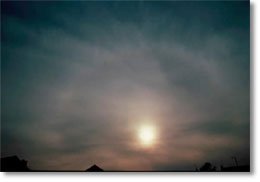
photo © R.K.Pilsbury
Condensation trails (contrails)
These are thin trails of condensation, formed by the water vapour rushing out from the engines of jet aircraft flying at high altitudes. They are not true clouds, but can remain in the sky for a long time, and grow into cirrus clouds.
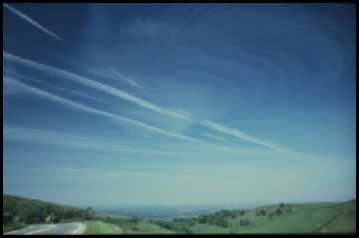
photo © S D Burt
What influences the colour of clouds?
Light from both the sky and from clouds is sunlight which has been scattered. In the case of the sky, the molecules of air (nitrogen and oxygen) undertake the scattering, but the molecules are so small that the blue part of the spectrum is scattered more strongly than other colours.
The water droplets in the cloud are much larger, and these larger particles scatter all of the colours of the spectrum by about the same amount, so white light from the sun emerges from the clouds still white.
Sometimes, clouds have a yellowish or brownish tinge – this is a sign of air pollution.
Why do clouds stop growing upwards?
Condensation involves the release of latent heat. This is the ‘invisible’ heat which a water droplet ‘stores’ when it changes from a liquid into a vapour. Its subsequent change of form again releases enough latent heat to make the damp parcel of air warmer than the air surrounding it. This allows the parcel of air to rise until all of the ‘surplus’ water vapour has condensed and all the latent heat has been released.
Therefore, the main reason which stops clouds growing upwards is the end of the release of latent heat through the condensation process. There are two other factors which also play a role. Faster upper atmospheric winds can plane off the tops of tall clouds, whilst in very high clouds, the cloud might cross the tropopause, and enter the stratosphere where temperatures rise, rather than decrease, with altitude. This thermal change will prevent further condensation.
Why are there no clouds on some days?
Even when it is very warm and sunny, there might not be any clouds and the sky is a clear blue. The usual reason for the absence of clouds will be the type of pressure, with the area being under the influence of a high pressure or anticyclone. Air would be sinking slowly, rather than rising and cooling. As the air sinks into the lower part of the atmosphere, the pressure rises, it becomes compressed and warms up, so that no condensation takes place. In simple terms, there are no mechanisms for clouds to form under these pressure conditions.
Measuring clouds
The cloud amount is defined as ‘the proportion of the celestial dome which is covered by cloud.’ The scale used is eighths, or oktas, with observers standing in an open space or on a rooftop to get a good view or panorama of the sky.
Complete cloud cover is reported as 8 oktas, half cover as 4 oktas, and a completely clear sky as zero oktas. If there is low-lying mist or fog, the observer will report sky obscured.
The reporter will also report the amount of each cloud level – 2 oktas of cumulus and 3 oktas of cirrus, etc.
The frequent passage of depressions across the United Kingdom means that the most commonly reported cloud amount is, not surprisingly, 8 oktas. A clear blue sky, i.e. zero oktas, is less common, as often on hot, sunny days, there are small wispy layers of cirrostratus or fine tufts of thin cirrus at high altitudes.
The formation of precipitation
Cooling, condensation and cloud formation is the start of the process which results in precipitation. But not all clouds will produce raindrops or snowflakes – many are so short-lived and small that there are no opportunities for precipitation mechanisms to start.
There are two theories that explain how minute cloud droplets develop into precipitation.
10.1 The Bergeron Findeisen ice-crystal mechanism
If parcels of air are uplifted to a sufficient height in the troposphere, the dew-point temperature will be very low, and minute ice crystals will start to form. The supercooled water droplets will also freeze on contact with these ice nuclei.
The ice crystals subsequently combine to form larger flakes which attract more supercooled droplets. This process continues until the flakes fall back towards the ground. As they fall through the warmer layers of air, the ice particles melt to form raindrops. However, some ice pellets or snowflakes might be carried down to ground level by cold downdraughts.
10.2 Longmuir’s collision and coalescence theory
This applies to ‘warm’ clouds, i.e. those without large numbers of ice crystals. Instead they contain water droplets of many differing sizes, which are swept upwards at different velocities so that they collide and combine with other droplets.
It is thought that when the droplets have a radius of 3 mm, their movement causes them to splinter and disintegrate, forming a fresh supply of water droplets.
This theory allows droplets of varying sizes to be produced, and as shown in the table below, each will have a different terminal (or falling) velocity.
| Particle radius (mm) | Terminal velocity (m/s) |
Cloud | 0.001 0.005 0.01 0.5 | 0.0001 0.0025 0.01 0.25 |
Drizzle | 0.1 0.25 | 0.7 2.0 |
Rain | 0.5 1.0 1.5 2.0 2.5 | 3.9 6.5 8.1 8.8 9.1 |
Table 2: The terminal velocities of different particle sizes
10.3 Man-made rain
In recent years, experiments have taken place, chiefly in the USA, China and the former USSR, adding particles into clouds that act as condensation or freezing nuclei. This cloud seeding involves the addition into the atmosphere from aircraft of dry ice, silver iodide or other hygroscopic substances. These experiments have largely taken place on the margins of farming areas where rainfall is needed for crop growth, or to divert rain from major events such as the 2008 Beijing Olympics.
The nature of clouds
A classification of clouds was introduced by Luke Howard (1772-1864) who used Latin words to describe their characteristics.- Cirrus – a tuft or filament (e.g. of hair)
- Cumulus – a heap or pile
- Stratus – a layer
- Nimbus – rain bearing

Clouds form when moist air is cooled to such an extent that it becomes saturated. The main mechanism for cooling air is to force it to rise. As air rises it expands – because the pressure decreases with height in the atmosphere – and this causes it to cool. Eventually it may become saturated and the water vapour then condenses into tiny water droplets, similar in size to those found in fog, and forms cloud. If the temperature falls below about minus 20 °C, many of the cloud droplets will have frozen so that the cloud is mainly composed of ice crystals.
The main ways in which air rises to form cloud
- Rapid local ascent when heated air at the earth’s surface rises in the form of thermal currents (convection).
- Slow, widespread, mass ascent where warm moist air is forced to rise above cold air. The region between warm and cold air is called a ‘front’.
- Upward motion associated with turbulent eddies resulting from the frictional effect of the earth’s surface.
- Air forced to rise over a barrier of mountains or hills.
The first of these tends to produce cumulus-type clouds, whereas the next two usually produce layered clouds. The last can produce either cumulus-type cloud or layered cloud depending upon the state of the atmosphere. The range of ways in which clouds can be formed and the variable nature of the atmosphere give rise to the enormous variety of shapes, sizes and textures of clouds.
Types of cloud
The ten main types of cloud can be separated into three broad categories according to the height of their base above the ground: high clouds, medium clouds and low clouds.
High clouds are usually composed solely of ice crystals and have a base between 18,000 and 45,000 feet (5,500 and 14,000 metres).
- Cirrus – white filaments
- Cirrocumulus – small rippled elements
- Cirrostratus – transparent sheet, often with a halo
Medium clouds are usually composed of water droplets or a mixture of water droplets and ice crystals, and have a base between 6,500 and 18,000 feet (2,000 and 5,500 metres).
- Altocumulus – layered, rippled elements, generally white with some shading
- Altostratus – thin layer, grey, allows sun to appear as if through ground glass
- Nimbostratus – thick layer, low base, dark. Rain or snow falling from it may sometimes be heavy
Low clouds are usually composed of water droplets – though cumulonimbus clouds include ice crystals – and have a base below 6,500 feet (2,000 metres).
- Stratocumulus – layered, series of rounded rolls, generally white with some shading
- Stratus – layered, uniform base, grey
- Cumulus – individual cells, vertical rolls or towers, flat base
- Cumulonimbus – large cauliflower-shaped towers, often ‘anvil tops’, sometimes giving thunderstorms or showers of rain or snow
Most of the main cloud types can be subdivided further on the basis of shape, structure and degree of transparency.
Cumulus
Cumulus clouds are often said to look like lumps of cotton wool. With a stiff breeze, they march steadily across the sky; their speed of movement gives a clue to their low altitude. Cumulus clouds occasionally produce light showers of rain or snow.

© Steve Jebson

© Steve Jebson
Typically, the base of cumulus clouds will be about 2,000 feet (600 metres) above ground in winter, and perhaps 4,000 feet (1,200 metres) or more on a summer afternoon. Individual clouds are often short-lived, lasting only about 15 minutes. They tend to form as the ground heats up during the day and become less frequent as the sun’s heat wanes towards evening.
The cause of small cumulus clouds is usually convection. Heat from the sun warms the ground, which in turn warms the air above. If a ‘parcel’ of warm air is less dense than the cooler air around it or above it, the ‘parcel’ of air starts to rise – this is known as a ‘thermal’. As it rises it expands and cools, and, if cooled sufficiently, the water vapour condenses out as tiny cloud droplets. A cumulus cloud is born.
The air within the cloud will continue to rise until it ceases to be buoyant. On some sunny days there is insufficient moisture or instability for moisture to form.
In hilly regions, a high, south-facing slope acts as a good source of thermals, and therefore of cumulus. Occasionally, a power station or factory will produce a cloud of its own.
When air rises in thermals there must be compensating downdraughts nearby. These create the clear areas between cumulus clouds and make it easier for glider pilots to find the thermals that they can use to gain height.
Cumulonimbus
Just as cumulus is heaped cloud, so cumulonimbus is a heaped rain cloud (nimbus means rain).

In many ways the rain-bearing variety can be considered as a bigger, better-organised version of the cumulus. A cumulonimbus may be 10 km across and extend 10 km above the ground. This compares with a cumulus cloud which is typically a few hundred metres across and reaches a height of only a few kilometres. Instead of a ball of cotton wool, a cumulonimbus will resemble a huge cauliflower of sprouting towers and bulging turrets.
But there is one important structural difference in that the uppermost levels of the cumulonimbus have turned to ice and become fibrous in appearance, whereas cumulus clouds are composed entirely of water droplets. This icy section at the top may flatten out into an ‘anvil’ shape when the cloud is fully developed. When it reaches this stage, the base is usually dark, and there will be showers of rain or, sometimes, hail. In winter, the showers may be of sleet or snow. The showers are often quite heavy and may be accompanied by lightning and thunder.
Sometimes cumulonimbus will be ’embedded’ or half hidden among other clouds. On other occasions they will be well separated and the ‘anvil’ may well be visible many miles away. Cumulonimbus clouds may be seen at any time of the day, but are most common inland during the afternoon in spring and summer, and frequently occur in the tropics. They develop where convection is at its strongest and most organised.
The lifetime of a cumulonimbus is usually less than one hour.
There are exceptions though. The ‘Hampstead storm’ of 14 August 1975 was an example of a cumulonimbus cloud that managed to keep regenerating itself over one small area of London. About 170 mm of rain fell in three hours, causing severe flooding.
Stratus

© Jim Galvin

© A. Bushell
Stratus is a low-level layer cloud (not to be confused with altostratus and cirrostratus, which are much higher). In appearance, it is usually a featureless grey layer. Sometimes, when a sheet of stratus is affecting an area, the cloud base will be right down to the ground and will cause fog. However, the usual base is between the ground and 1,000 feet (300 metres), which means that hilltops may be obscured by cloud. Sometimes stratus will produce drizzle or light snow, particularly over hills.
Perhaps the most important indication of its low altitude is its apparent rapid movement across the sky in any wind stronger than a flat calm. For example, a stratus cloud at 500 feet (150 metres) moving at 20 miles per hour will appear to move much faster than altostratus with its base at 10,000 feet (3,000 metres) moving at 60 miles per hour.
An approximate guide to the height of stratus may be gained by measuring the relative humidity and subtracting it from 100. The resulting number gives some idea of the height of the low cloud in hundreds of feet. For example, 94% relative humidity would indicate that the stratus is about 600 feet (180 metres) above the ground.
Stratus forms as the result of condensation in moist air at low levels due to cooling. The cooling may be caused in a number of ways:
- lifting of air over land due to hills or ‘bumping’ over rough ground;
- warm air moving over a cold sea. If the cloud moves in over the land, it will readily cover any relatively high ground. In some cases, the base of the cloud falls to the sea surface, causing fog. This may drift in over the coast and is called sea fog, though it goes by the name of haar in the north and east of Scotland and fret in the east of England;
- temperature falling over land at night. The air may have been brought inland during the day on a sea breeze. There needs to be some wind, otherwise the cooling may lead to radiation fog.
Stratocumulus
Stratocumulus clouds usually form between 1,000 and 6,500 feet (300 and 2,000 metres).

Stratocumulus will often give a sheet of almost total cloud cover, with perhaps one or two breaks. The cloud elements are rounded and almost join up. Occasionally, the sheet is composed of a series of more or less parallel rolls, which often, but not always, lie ‘across the wind’. Stratocumulus sometimes produces light falls of rain or snow.
Stratocumulus is formed by weak convection currents, perhaps triggered by turbulent airflows aloft. The convection affects a shallow zone because dry, stable air above the cloud sheet prevents further upward development.
Sometimes there are huge sheets of stratocumulus covering thousands of square kilometres around the flanks of a high pressure system, especially over the oceans. The weather below such sheets tends to be dry, but it may be rather dull if the cloud is two or three thousand feet thick.
Altocumulus
Altocumulus clouds usually form between 6,500 and 17,000 feet (2,000 and 5,000 metres) and are referred to as medium level clouds.

In most cases, there is little difference between the properties of stratocumulus and altocumulus, since both are composed of water droplets and are normally limited in vertical extent. The deciding factor between stratocumulus and altocumulus normally comes down to height as both types are formed in the same way.
Altocumulus also provides a sort of dappled pattern, but, since it is at a greater altitude, the cloud elements look smaller. One significantly different form is altocumulus castellanus, which is like a vigorous medium-level cumulus , sometimes with rain falling from their base, known as trailing virga. This type of cloud is sometimes an indication that thunderstorms will follow
Altostratus
Altostratus clouds normally have a base between 8,000 and 17,000 feet (2,500 and 5,000 metres).
Altostratus appears as a uniform sheet either totally or partially covering the sky. Sometimes it is thin enough to just reveal the sun or moon. The sun appears as if through ground glass but shadows are not visible on the ground. Sometimes, if the base is below 10,000 feet (3,000 metres) it may give light rain or snow.
Nimbostratus

Nimbostratus clouds are found between 1,500 and 10,000ft (450 and 3,000 metres).
Nimbostratus forms a thick, diffuse layer of dark grey cloud covering all or most of the sky, which always obscures the sun or moon. It is accompanied by moderate or heavy rain or snow, occasionally ice pellets. Although classed as a medium cloud, its base frequently descends to low cloud levels. Nimbostratus may be partly or even totally obscured by stratus forming underneath in precipitation.
Cirriform clouds
Cirriform clouds (i.e. clouds from the cirrus family) are found at high altitude, usually above 20,000 feet (6,000 metres). They are composed of ice crystals. Three types of cloud make up the group: cirrus, cirrostratus and cirrocumulus.
 Cirrus itself is very common in the British Isles and throughout most of the world. It is thin, wispy and white in appearance, and its name, coming from the Latin word for ‘tuft of hair’, gives a good description of the cloud. Another name for the cloud, ‘mares tails’, also conjures up an accurate image. Cirrus may be hooked or straight depending on the airflow aloft. Sometimes it comes as a very dense patch which is left over from the ‘anvil’ cloud of a cumulonimbus that has disappeared. On other occasions, cirrus may be quite extensive when associated with a jet stream – the cloud can then be seen moving across the sky, despite its great altitude. Aircraft condensation trails are a form of man-made cirrus. They can sometimes be seen in ‘historical’ films, to the delight of film buffs who enjoy spotting technical inaccuracies.
Cirrus itself is very common in the British Isles and throughout most of the world. It is thin, wispy and white in appearance, and its name, coming from the Latin word for ‘tuft of hair’, gives a good description of the cloud. Another name for the cloud, ‘mares tails’, also conjures up an accurate image. Cirrus may be hooked or straight depending on the airflow aloft. Sometimes it comes as a very dense patch which is left over from the ‘anvil’ cloud of a cumulonimbus that has disappeared. On other occasions, cirrus may be quite extensive when associated with a jet stream – the cloud can then be seen moving across the sky, despite its great altitude. Aircraft condensation trails are a form of man-made cirrus. They can sometimes be seen in ‘historical’ films, to the delight of film buffs who enjoy spotting technical inaccuracies.
 Cirrostratus is a fairly uniform sheet of thin cloud through which the sun or moon can be seen. Sometimes, if the cloud is thin, a bright ring of light (called a halo) surrounds the sun or moon. A layer of cirrostratus is often an indication of a deterioration in the weather.
Cirrostratus is a fairly uniform sheet of thin cloud through which the sun or moon can be seen. Sometimes, if the cloud is thin, a bright ring of light (called a halo) surrounds the sun or moon. A layer of cirrostratus is often an indication of a deterioration in the weather.
 Cirrocumulus is often present in small amounts along with cirrus, but rarely does it dominate the sky. On those occasions when it is widespread, a beautiful spectacle is created, especially at sunset. The individual clouds appear very small – often tiny rows of roughly spherical pear-like cloud elements. Sometimes they occur in undulating patterns like tiny ripples.
Cirrocumulus is often present in small amounts along with cirrus, but rarely does it dominate the sky. On those occasions when it is widespread, a beautiful spectacle is created, especially at sunset. The individual clouds appear very small – often tiny rows of roughly spherical pear-like cloud elements. Sometimes they occur in undulating patterns like tiny ripples.
This information sheet is based on a series of articles written by Dick File that appeared in The Guardian. Web page reproduced with the kind permission of the Met Office
Short-answer questions
1. Make concise definitions of the following terms.
(a) Condensation.
(b) Dew point.
(c) Supercooled.
(d) Humidity.
2. Explain the two ways by which parcels of air can reach saturation.
3. Outline the five factors that will cause parcels of air to
rise and cool.
4. Match up the descriptions in list B with the correct term
in list A:
List A: Cumulus; Cirrus; Stratus; Nimbus.
List B: Rain bearer; Heaped; Thread-like or hairy; Sheets or layers.
5. Which of the following are correct statements?
(i) Low clouds form up to 10,000
feet above the surface.
(ii) High clouds form between 17,000
and 35,000 feet above the surface.
(iii) Altocumulus and altostratus are two types
of high cloud.
(iv) Nimbostratus is a medium-level cloud.
(v) Cumulonimbus is a low cloud.
6. Describe the likely characteristics of the following cloud
types.
(a) Cumulus
(b) Stratus
(c) Cirrus
7. With which cloud formations would you associate the phrase
‘mackerel sky’?
8. What weather conditions might follow the appearance of altocumulus
castellanus?
9. What are contrails? What clouds might they produce over time?
10. Why do most clouds appear white?
11. What prevents clouds from building up to very high levels
in the troposphere?
12. Under what conditions might you find warm, sunny weather,
but no clouds forming?
13. Outline how clouds are measured by observers.
14. Which amount of cloud cover is most commonly observed in
the British Isles? Explain why?
15. Why is it quite rare to observe zero oktas of cloud cover?
16. Explain the two theories that explain how cloud droplets
turn into precipitation.
17. What is cloud seeding?
Web page reproduced with the kind permission of the Met Office




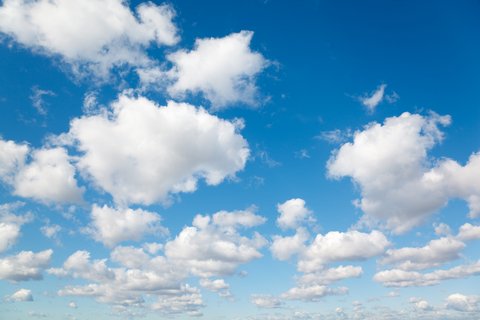


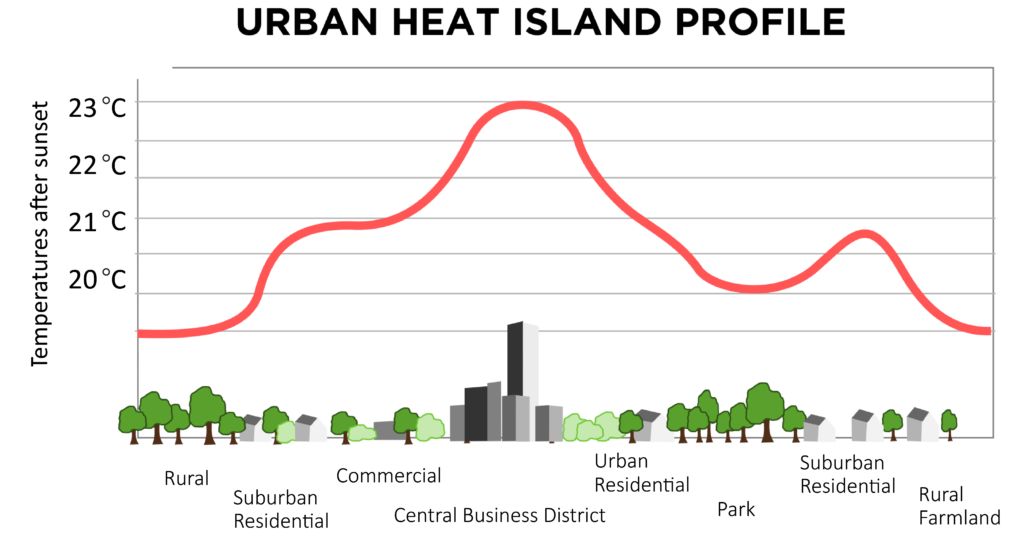
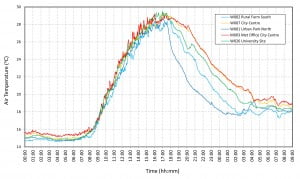




 To see a rainbow you should look opposite from the sun, against a showers or thunderstorms. In the UK, rainbows tend to be most common in the late afternoon and early evening period when the Sun is in the west. Remember: the Sun rises in the east and sets in the west.
To see a rainbow you should look opposite from the sun, against a showers or thunderstorms. In the UK, rainbows tend to be most common in the late afternoon and early evening period when the Sun is in the west. Remember: the Sun rises in the east and sets in the west. Rainbows have been talked about for many years. The ancient Greeks wrote about rainbows as a path made by Iris (the messenger of the Gods) between heaven and earth. Chinese mythology speaks of a slit in the sky sealed by the Goddess
Rainbows have been talked about for many years. The ancient Greeks wrote about rainbows as a path made by Iris (the messenger of the Gods) between heaven and earth. Chinese mythology speaks of a slit in the sky sealed by the Goddess  Sunlight is refracted in raindrops and is split into the different colours that make up the sunlight. The refracted light is then reflected off the back of the raindrop at an angle of around 42 degrees, which defines the angle in the sky that we see the rainbow. The blue light is a shorter wavelength and so is refracted at a bigger angle than the longer wavelength red light, which means that in the bow you see the red at the top and the blue near the bottom. The spreading out of light at different wavelengths is called dispersion. Because we see only one colour from each raindrop, a great many drops must be present for us to see a rainbow.
Sunlight is refracted in raindrops and is split into the different colours that make up the sunlight. The refracted light is then reflected off the back of the raindrop at an angle of around 42 degrees, which defines the angle in the sky that we see the rainbow. The blue light is a shorter wavelength and so is refracted at a bigger angle than the longer wavelength red light, which means that in the bow you see the red at the top and the blue near the bottom. The spreading out of light at different wavelengths is called dispersion. Because we see only one colour from each raindrop, a great many drops must be present for us to see a rainbow.
 When an active warm or occluded front approaches a given point, the following sequence of clouds is usually observed: Cirrus uncinus, Cirrostratus, Altostratus, Nimbostratus. Sometimes, the sequence also includes Cirrocumulus and Altocumulus clouds. As the slope of the warm or occluded front is typically 1 in 100 to 1 in 150, Cirrus uncinus clouds normally begin to appear twelve hours or more before the precipitation arrives. The passage of a warm front is marked by a change of cloud type to Stratus or Stratocumulus. The passage of an occluded front is marked by a change from Nimbostratus to Cumulonimbus clouds.
When an active warm or occluded front approaches a given point, the following sequence of clouds is usually observed: Cirrus uncinus, Cirrostratus, Altostratus, Nimbostratus. Sometimes, the sequence also includes Cirrocumulus and Altocumulus clouds. As the slope of the warm or occluded front is typically 1 in 100 to 1 in 150, Cirrus uncinus clouds normally begin to appear twelve hours or more before the precipitation arrives. The passage of a warm front is marked by a change of cloud type to Stratus or Stratocumulus. The passage of an occluded front is marked by a change from Nimbostratus to Cumulonimbus clouds. A supersaturated solution contains more than the normal saturation quantity of a solute. Air is therefore supersaturated if it contains more than enough water vapour to saturate it at its current temperature. Because the atmosphere contains condensation nuclei, significant amounts of supersaturation with respect to water rarely occur. As the example overleaf suggests, however, supersaturation with respect to ice occurs quite often.
A supersaturated solution contains more than the normal saturation quantity of a solute. Air is therefore supersaturated if it contains more than enough water vapour to saturate it at its current temperature. Because the atmosphere contains condensation nuclei, significant amounts of supersaturation with respect to water rarely occur. As the example overleaf suggests, however, supersaturation with respect to ice occurs quite often.
 When the sky is clear at night, land surfaces radiate heat to space and therefore cool.Sea and lake surfaces do not, however, cool by more than a small amount overnight (much less than 1°C). If the air in contact with a surface is cooled to its dew-point temperature, small water droplets form (condensation). If there is no wind, droplets of dew form on, for example, grass. If there is a very gentle breeze, the tiny water droplets are stirred upwards to form a shallow layer of radiation fog, as in the picture of fog at Cardiff shown. Fog can reach 30m high in some cases. This type of fog does not form over the sea because the temperature of the sea’s surface stays much the same day and night. During the day, the sun’s rays heat the ground beneath the fog. Most of the rays are actually reflected from the top of the fog but some reach the surface, otherwise it would not be daylight in the fog! The ground is gradually heated until the dew-point temperature is exceeded. The fog then dissipates (disappears), often very quickly.
When the sky is clear at night, land surfaces radiate heat to space and therefore cool.Sea and lake surfaces do not, however, cool by more than a small amount overnight (much less than 1°C). If the air in contact with a surface is cooled to its dew-point temperature, small water droplets form (condensation). If there is no wind, droplets of dew form on, for example, grass. If there is a very gentle breeze, the tiny water droplets are stirred upwards to form a shallow layer of radiation fog, as in the picture of fog at Cardiff shown. Fog can reach 30m high in some cases. This type of fog does not form over the sea because the temperature of the sea’s surface stays much the same day and night. During the day, the sun’s rays heat the ground beneath the fog. Most of the rays are actually reflected from the top of the fog but some reach the surface, otherwise it would not be daylight in the fog! The ground is gradually heated until the dew-point temperature is exceeded. The fog then dissipates (disappears), often very quickly. This kind of fog forms when cold air flows over water that is more than 9° or 10°C warmer than the air. Over sea water, steam fog is called sea smoke.
This kind of fog forms when cold air flows over water that is more than 9° or 10°C warmer than the air. Over sea water, steam fog is called sea smoke. Condensation results mainly from the cold air mixing with the air that is in contact with the water surface. However, convection also occurs, because the water is so much warmer than the overlying air. This convection causes the mixed air to rise a metre or more, thus enhancing the process of fog formation. Because of the convection, the water appears to ‘steam’. The photo shown was taken in the Canadian province of Quebec.
Condensation results mainly from the cold air mixing with the air that is in contact with the water surface. However, convection also occurs, because the water is so much warmer than the overlying air. This convection causes the mixed air to rise a metre or more, thus enhancing the process of fog formation. Because of the convection, the water appears to ‘steam’. The photo shown was taken in the Canadian province of Quebec. 1. Morning sunrise- the sun’s rays heat the ground beneath the fog and the water droplets evaporate to become water vapour. This effect spreads up through the fog and the fog dissipates. This is often called ‘burning off the fog’.
1. Morning sunrise- the sun’s rays heat the ground beneath the fog and the water droplets evaporate to become water vapour. This effect spreads up through the fog and the fog dissipates. This is often called ‘burning off the fog’. 2. Strong winds- these can cause turbulence within the fog and disperse the water droplets.
2. Strong winds- these can cause turbulence within the fog and disperse the water droplets.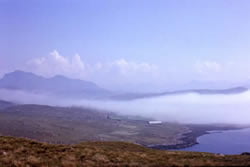
 When fog occurs at temperatures below 0°C, its water droplets are supercooled, i.e. they exist in the liquid state at a temperature below the normal freezing point. When these droplets strike obstacles such as fences, masts or vegetation, they freeze almost instantaneously to form milky opaque deposits of ice crystals on the windward sides of the obstacles. These deposits are called rime. In the British Isles, supercooled fogs are uncommon at low levels. They occur much more frequently on the tops of hills and mountains.
When fog occurs at temperatures below 0°C, its water droplets are supercooled, i.e. they exist in the liquid state at a temperature below the normal freezing point. When these droplets strike obstacles such as fences, masts or vegetation, they freeze almost instantaneously to form milky opaque deposits of ice crystals on the windward sides of the obstacles. These deposits are called rime. In the British Isles, supercooled fogs are uncommon at low levels. They occur much more frequently on the tops of hills and mountains. Cool air tends to flow downhill. Accordingly, radiation fog is most likely to be encountered in dips, especially where there is a stream or river and therefore a source of moisture.
Cool air tends to flow downhill. Accordingly, radiation fog is most likely to be encountered in dips, especially where there is a stream or river and therefore a source of moisture.

 Convection is controlled by buoyancy relative to a thermal’s surroundings. When ascending bubbles encounter an ‘inversion’, a layer where temperature increases with height, they tend to lose their relative buoyancy and spread out sideways, as shown in the picture to the right.. As cumulus clouds grow higher, their tops become colder. Eventually, when a temperature of about -10°C is reached, the water droplets of the cloud (which are by then supercooled) begin to freeze and become ice crystals. The anvils of cumulonimbus clouds are composed predominantly of ice crystals.
Convection is controlled by buoyancy relative to a thermal’s surroundings. When ascending bubbles encounter an ‘inversion’, a layer where temperature increases with height, they tend to lose their relative buoyancy and spread out sideways, as shown in the picture to the right.. As cumulus clouds grow higher, their tops become colder. Eventually, when a temperature of about -10°C is reached, the water droplets of the cloud (which are by then supercooled) begin to freeze and become ice crystals. The anvils of cumulonimbus clouds are composed predominantly of ice crystals. Instead of tea, we heat a beaker of water. First, we put a small crystal of potassium permanganate in a beaker of water. Then (right), we heat the beaker with a bunsen burner positioned under the crystal. Currents should form in the water. Can you explain these currents? How can you demonstrate convection currents in a cup of tea?
Instead of tea, we heat a beaker of water. First, we put a small crystal of potassium permanganate in a beaker of water. Then (right), we heat the beaker with a bunsen burner positioned under the crystal. Currents should form in the water. Can you explain these currents? How can you demonstrate convection currents in a cup of tea?